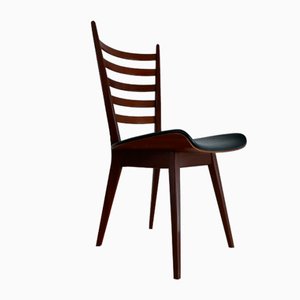
Dutch designer Cees Braakman was born in Utrecht in 1917. At the age of 17, he began working at Pastoe, a Utrecht-based furniture manufacturer, where he learned the trade. His father, D.L. Braakman (1885-1966), was then the company’s head draftsman and manager. In 1948, following the Second World War (during which time the factory was dismantled), Braakman followed in his father’s footsteps, taking on the role of Pastoe’s manager and designer, where he would remain until 1978.
In 1947, Braakman was sent to the United States to observe other manufacturers’ designs and practices. He was particularly inspired by the Herman Miller Company and by Charles and Ray Eames. Upon his return to the Netherlands, he began experimenting with bent plywood and created Pastoe’s first modern furniture line. He went on to develop several lines of popular furniture, marked by clean, elegant lines and a sense of proportion tailored to smaller living spaces. During the 1950s and ’60s, Braakman placed particular emphasis on modular storage solutions. In 1955, Pastoe launched Braakman’s Made-to-Measure cabinets, which allowed customers to choose from a variety of woods and configurations and self-assemble them. In 1957, the teak version of the Made-to-Measure furniture system earned a silver medal at the 1957 Triennale in Milan. In 1958, Braakman introduced the more formal, similarly clean-lined U+N cabinet series (this collection, in contrast, was not meant to be assembled by the end user). Notably, Braakman’s Mobilo (Model PE03) cart (1953) is included in Amsterdam’s Stedelijk Museum. He passed away in Utrecht in 1995.

